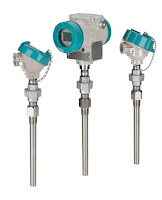 |
| Parking lot CO2 Monitor (courtesy of CONSPEC) |
Reprinted with permission by CONSPEC
Carbon monoxide (CO) emissions from motor vehicles can have detrimental effects on the air quality inside subterranean parking garages. CO, an odorless, tasteless and colorless gas, is the leading cause of accidental poisoning deaths in the United States. The Centers for Disease Control estimates that CO poisoning claims nearly 500 lives and accounts for more than 15,000 visits to emergency rooms annually. When not properly ventilated, CO concentrations can build to toxic levels. Also when CO emissions fill a space, the oxygen in that space is depleted, causing asphyxiation.
Ventilation systems, therefore, are a must for today’s mixed use underground parking facilities, but they can be costly to operate 24 hours, seven days a week. This is why mechanical contractors and HVAC specialists are increasingly specifying CO monitoring and ventilations systems for both new and existing parking structures.
CARBON MONOXIDE SENSING TECHNOLOGIES
Not all CO sensors are alike. Electrochemical sensing technology provides many advantages over the older semiconductor (“solid state”) sensors or infrared sensors. Electrochemical sensors offer high resolution (≤ 0.5 ppm), a linear signal, long-term stability (≥5% over the lifetime of the sensor) and immunity to false alarms caused by “nuisance gases.”
The best CO sensing technologies will also alert facility and emergency personnel, via cell phone, in the case of dangerous concentrations of CO. Use of CO monitoring and ventilation can not only protect human health, but also can help prevent fire, as increased CO levels can sometimes predict the imminent threat of fire.
While inadequate ventilation can drastically increase the risks of liability, continuous operation of ventilation systems can
be costly. To minimize heat loss in winter, as well as conserve energy used by the ventilation fan motors, some parking garage owners began to operate ventilation systems only during peak traffic times, that is, during the morning and evening rush hours. This, however, failed to take into account instances
in which a car was left idling or parking patterns varied from the norm. This explains the growing trend toward installation of CO monitoring and ventilation control systems.
AN ALTERNATIVE TO CONTINUOUS VENTILATION
To minimize health and safety liability issues, some garage owners decided to simply run ventilation systems continuously, but this created other problems. Jeff Aiken, a project manager with Professional Mechanical Contractors, Inc., notes that continuous fan operation can mean continuous annoyance for tenants in apartments or condominiums close to fans.
“CO emissions also create tremendous liability issues,” Aiken noted, “but continuous operation is not a good solution. Installing a gas detection solves this dilemma.”
In response to the energy crisis in California in the 1980s, Conspec Controls developed a combined CO monitoring and ventilation system using electrochemical sensing technology. For maximum cost efficiency in new construction, the design should include an integrated CO monitoring and ventilation system.
The Conspec P2621 is often specified due to its large area of coverage. For instance, in a typical garage with ten-foot ceilings, one unit will cover 10,000 square feet, while competing systems require two units in the same space.




